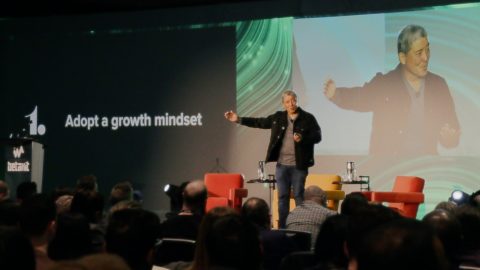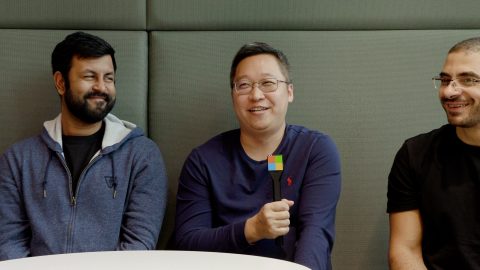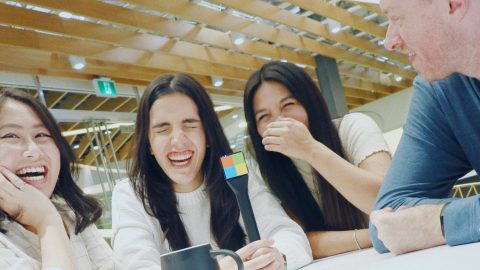Microsoft Forms: Connecting with Customers to Empower Innovation
Questions and answers; data and analysis. Each is a critical component in the process of innovation.
No one knows this better than the software engineering team behind the Microsoft Forms application.
“Microsoft Forms is a product that empowers people to collect data easily and make smart decisions,” said Rimon, Principal Software Engineering Manager for the Forms team here in Vancouver.
Part of the M365 Suite, Forms is a SaaS product that allows users to build and deploy custom surveys, polls, and quizzes. The tool is extremely simple to use, while also enabling customers to collect high-quality data.
We sat down with the developers here in Vancouver to go behind the scenes. They shared with us how the team balances pushing the product forward – iterating to integrate cutting-edge technologies – while maintaining a straightforward user experience.
“The engineering team in Vancouver works on all the different levels of the stack – from the client side all the way to the backend – we build most of the features. And we also integrate with customers,” detailed Rimon.
The Forms developers are closely connected to their customers, and being exposed to a never-ending diversity of use cases helps the team anticipate where to take the product next.
“In schools, it can be used for exams,” explained Rimon. “Frontline workers, enterprises, [and] even small businesses can get feedback from [their own clients or] customers. And individuals [use Forms] as well,” mentioned Rimon, describing use cases where individuals used Forms to collect attendee data ahead of weddings. “When people love a specific tool, they will find a way to use it differently, right?”
Customer connection seems to be the team’s secret to success – something that’s been true since day one.
“At the very beginning, Microsoft didn’t have the Forms product,” recalled Tao, a Senior Software Engineer on the Forms team whose been connected to the product since its inception in 2016.
At this time, Tao was part of a group of six software engineers who saw an opportunity to make data collection smoother and simpler for Microsoft employees, and eventually, customers. “When we started Forms, the first thing on my mind was that I wanted customers to [be able to] use it easily. It doesn’t need to be very complicated,” said Tao.
They became the original Forms team and what started as an internal solution took off. “The first release… I remember it took around nine months,” fondly recalled Tao. “I still remember [when] we checked in the last piece of code, and then [we] announced it to Microsoft.”
I started with one of the most demanded features by customers. It feels very good to create that kind of impact in three months – Deepak, on joining the Forms Vancouver team.
Since, Forms has scaled to millions of monthly users. To support the product’s further development, a Vancouver branch of the dev team was created in 2021.
Today, the Forms team works together seamlessly across continents and time zones. Everyone brings something unique to the table, and more than anything, the team members are grateful for one of the greatest byproducts of collaboration: endless opportunity to learn.
“I came from the backend, switching to frontend work [for this role],” shared Deepak, , and the newest addition to the Forms Vancouver team. “I needed a lot of help to start with.”
But just three months in he’s already starting to feel caught up. “Whenever you are blocked on something, you can just ping some someone. And we also maintain a repository of experts [that we can reach out to directly].”
The rest of the team feels the same way.
“We just had a knowledge sharing session this morning,” shared Frank, Software Engineer 2, and the team’s OCE – On Call Engineer – for the week. “And actually, we have knowledge sharing sessions biweekly. We try our best to make it inclusive, recording meetings and making sure new members of our team will be able to access the videos.”
The support from colleagues sets the whole team up for success. “I started with one of the most demanded features by customers,” said Deepak, reflecting on his journey since his first day. “It feels very good to create that kind of impact in three months.”
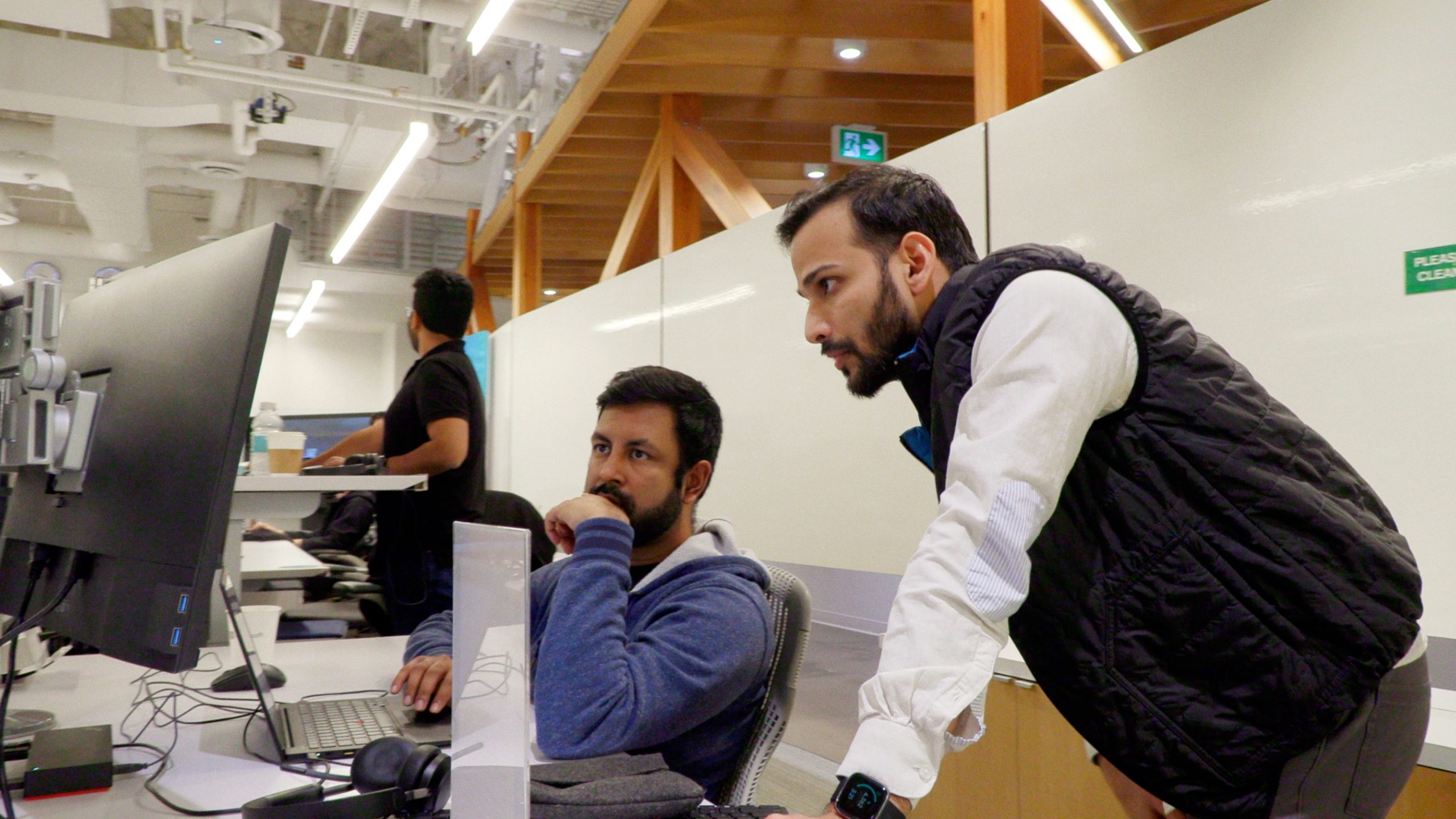
Much of this is made possible by hybrid work. On top of collaborating remotely with global teammates, the Vancouver team leverages Microsoft’s hybrid work model to optimize each work week.
“Some of the time we work from home, very efficiently,” said Rimon. For a portion of the week, the Vancouver team members work remotely, each free to touch down at the office if need be. On these days, the team seeks to maximize productivity by reducing inefficiencies like commute times.
But three days a week the team comes together in the office, utilizing Microsoft Vancouver’s Collaboration Space to spend dedicated time together, in person. “When we get together, we have team building events [and we go out] to eat like we just did [today],” explained Rimon. “And another thing is the collaboration when we are in person – you see a lot of people jumping on one computer, all of them looking at the same screen and trying to help each other.”
“I think we are getting the best of the two worlds,” said Rimon. And by prioritizing flexibility, this model simultaneously prioritizes communication and inclusivity. Not always being in the same place at the same time, team members are accountable for communicating clearly with one another. Everyone on the team feels respected and appreciated, no matter where they are.
“People respond,” said Kaustubh, who is celebrating a recent promotion to Senior Software Engineer, when asked what collaboration looks like for him. “People on our team are really responsible and they just want to help you out, so that’s what collaboration for us looks like.”
Anirudh, Forms Software Engineer 2, agrees, seeing his team’s collaboration style as an important asset to career development. “It’s something that you can leverage a lot and learn from if you’re really interested in growing your career.”
The approach they bring to communicating and collaborating with one another they also bring to their customers. The team isn’t just connected to what changes need to be made, they’re also stakeholders in the implementation process.
“We care about how [feature implementations are] going to be perceived by the customer… How is [this] going to help? How does it feel? Can we improve that flow for the customer?” Rimon’s pride in his team shines brightly when sharing their commitment to customer obsession. “And this is great, because we are thinking about how we can improve the customer experience in the product.”
“We have something called OCV – one customer voice – where customers can voluntarily ask for a feature, or they can just give us feedback,” shared Shobhit, Forms Software Engineer 2.
Flora, another Forms Software Engineer 2, acts as a conduit, empowering her colleagues to be data driven. Her day to day involves analyzing customer data from telemetry pipelines to provide the team with insights to understand the product needs behind each request.
“We really care about data-driven analysis,” shared Flora. “We [put] a lot of effort into building data pipelines to collect more accurate user behavior information, and we build dashboards [to track usage for] different features.”
The foundation of Forms’ culture has been grounded in collaboration and customer connection since the team first came together. Today, its this foundation that provides the team with the capacity to innovate even further.
Forms and Excel really go hand in hand – Shobhit on Forms’ recent release enabling live data syncing with Excel.
Most recently, the team is focused on shipping top product updates requested by customers and integrating with Microsoft’s most cutting-edge solutions.
Forms recently announced a feature that’s been in the works for years – live data syncing between Microsoft Forms and Excel.
“Forms users have been asking for [live Excel integration] for several years. And we finally delivered it to the market in this February,” remarked Tao, with the rest of the team nodding along. “For example, you share [your] Form, you receive responses, and [theses] responses will [populate directly in] your Excel workbook,” he explained.
It’s a natural next step for the product and the team is proud. “Forms and Excel really go hand in hand,” noted Shobhit. “Because Forms is a data collection tool and Excel is data analysis tool, one tool is complimenting the other.”
Forms allows you to ask questions and collect data. Now, with live excel integration, users can get from data collection to data analysis faster than ever before, and that’s what leads to answers. Ultimately, answers are what Forms’ customers are after, so its no surprise that this feature has been a long time coming.
“We want to move fast. But most importantly, we want to move correctly,” said Jinxiao, one of the team’s Senior Software Engineers who has been cross-collaborating with the Office Product Group (OPG) Security and Compliances teams for the past several months on another high-demand integration.
“Copilot in Forms is available in March [2024],” shared Jinxiao.
The team’s energy was high – the announcement had gone public earlier in the day and they were ready to celebrate. “Bringing the large language model capability to Forms is a huge step.”
“Previously, when [users] created a form, they [would] need to create questions one by one, which can be time consuming,” added Frank, jumping in to explain how Copilot can help users level up their experience in Forms. “But now they can ask Copilot to draft [the] first version, refine from there, [and] save a lot of time.”
“It feels amazing to be in the in the middle of cutting-edge technology and [to be] improving our products by integrating Copilot,” noted Rimon.
“We’re [focused on ensuring] Microsoft Forms is one of the best products across its competitors,” noted Deepak. The whole team agrees. “Like Jinxiao mentioned, [the] integration of copilot into Forms is a really big step,” included Frank.
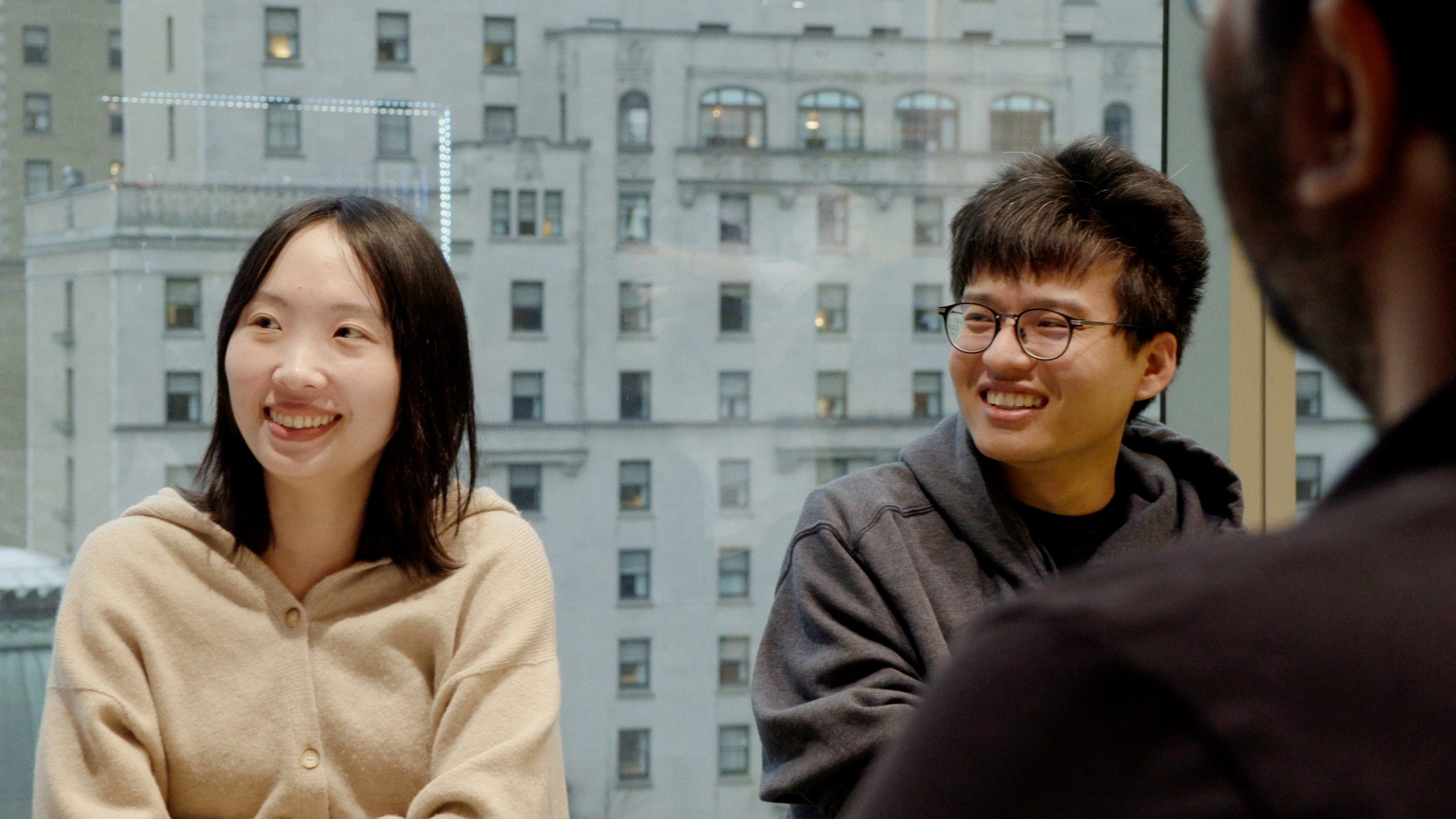
The team isn’t stopping here. There’s more on the horizon for Forms, and as they work towards future releases, they’re commitment to customer connection remains at top of mind.
“I feel like there’s a healthy blend of innovation and customer focus,” shared Aditya, another of Forms Vancouver-based Senior Software Engineers. “I think there is a lot of effort that goes into creating a fun, nice experience for customers, but the core of it all is to create something useful.”
For Tao, it’s been incredible to experience both the product and the team grow over time.
He likens the experience to being a parent. “Watching the [product’s] use increase from Microsoft internal, [to] thousands of users [within] Microsoft, to hundreds of thousands of users [externally] to the hundreds of millions of users [Forms has today] feels like watching our child grow [up].”
He shares his colleagues’ sentiments that the best is still yet to come, and he’s excited to be driving the product’s evolution with the team in Vancouver. “Last year, [my family] made the decision to come to Vancouver. At the very beginning, we had some concerns – could we get used to this new life?”
Now more than a year in, Tao’s confident they made the right choice. “The weather is good. The food… Yeah, the food is good. The people are so friendly, and the city is open to everyone from other parts of the world.”
Microsoft’s Vancouver campus is home to over a dozen product teams working on a diversity of Microsoft’s core applications, and Forms is excited to be growing their team locally.
“Microsoft Vancouver offers so many opportunities,” said Rimon, “being in Canada, being in Vancouver [which is] in the same time zone as Redmond [and] having all the other teams around us here who works on products that we integrate with we can leverage their knowledge.”
We wrapped up our team interview as the sun was setting over downtown Vancouver. “And we have a beautiful office, so it’s pretty awesome to be here,” concluded Rimon.


